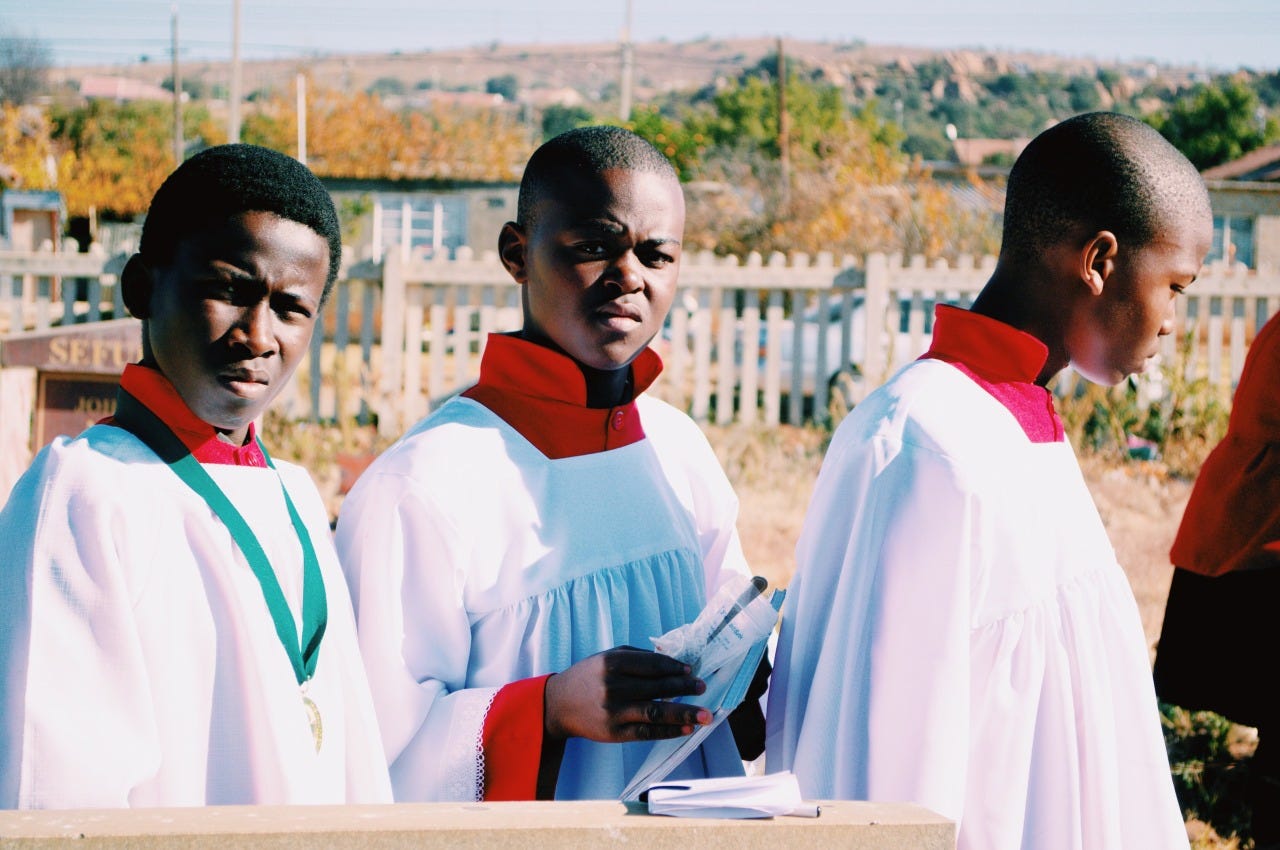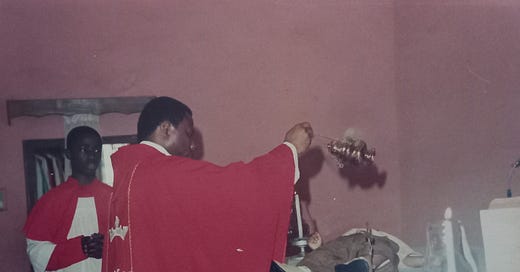
The altar is draped in red and white. On it lies a boy, supine, the black soles of his baby shoes visible. He has been kept amid two candle stands, a small metal crucifix inches away from his left foot, and above him hovers the hand of a priest, in whose fist the chains of a thurible are gripped. The priest, caught in profile, is dressed in vestments matching the altar cloths, and matching, as well, the vestments of the altar boy, whose interlaced fingers are held in front of him, as if in waiting.
While flipping through photographs from my family album, encountering this picture drew my mind to Neo Baepi’s “Altar Boys”. Aside from having three figures fully captured in the frame, the two photographs are similar for they are ostensibly religious, and red and white vestments are worn. In the liturgical calendar used by the Catholic, Anglican and other episcopalian churches, red is the color of Palm Sunday, Pentecost, and Good Friday. It signifies, in each of these occasions, the triumphant entry of Christ into Jerusalem, the fire of the Holy Spirit descending on Christ’s disciples, and the blood of Christ spilled on the cross. So, quite possibly, both photographs may have been taken in the same liturgical season, years apart.
Looking closer at the photographs, I became intrigued by the divergence in their similarities, where both pictures seem to be doing the same thing, but not really. For one, the altar boys in both photographs share an intense gaze, but if the mood of the boys in Baepi’s photograph is said to be “wavering like a flicker of naked fire,” then the mood of the altar boy in my photograph can be said to be steady as a flame frozen in a picture. Also, both photographs mark a family event where there is an unveiling: for Baepi’s photograph, “the unveiling of a family tombstone,” and for my photograph, at least by Catholic tradition, the unveiling of life. The divergence, in this instance, is carried outside the frame, too.
A tombstone marks the end of life, so I imagine that the mood outside the picture frame of Baepi’s photograph is sombre, with pensive faces contemplating the finality of death. By contrast, outside the frame of my photograph, among the congregation where I sit, the mood is light-hearted – with joy, in celebration, accompanied by family and friends to be presented to God, a newborn is brought to church. ¶
About the Contributor
Zenas Ubere is a Nigerian writer and editor. He was selected for LOATAD’s 2023 West African Writers Residency Programme and was a participant in the SBMEN-Goethe Institut Art Writing and Criticism Workshop. He is the coordinator of Lolwe Classes. Discover more of his work here, and through this interview on Africa in Dialogue.
This is the #4 edition of KINDRED, a series on TENDER PHOTO. Each contributor selects a photograph from their family or personal album, pairs it with another photograph from the Tender Photo archive, and writes a short reflection on why they have selected both photographs. The idea is to find an analogy between two photographs that might be similar or dissimilar, but connected to an experience, emotion, or idea.
TENDER PHOTO is a bi-weekly newsletter on African photography, published Wednesdays and Fridays. See the archive for more features and commentaries on early to mid-career photographers, or submit your work. If this newsletter was shared with you, consider subscribing, or forward to a friend. Please whitelist the newsletter to ensure you never miss it.




